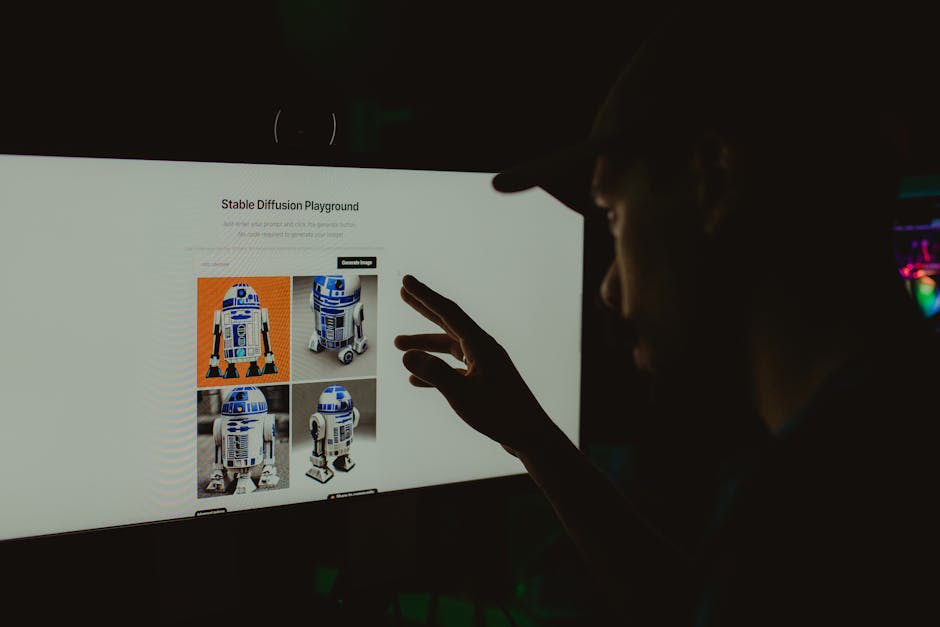Table of Contents
You know, sometimes I think about how fast things change online. It feels like just yesterday everyone was freaking out about pop-ups, right? But seriously, if you’re still pushing out those same old static banner ads in 2025, you might as well be sending carrier pigeons. The digital world has moved on, and so have people’s expectations. What’s really taking over the screen – and people’s minds – are these things we call rich media display ads. They’re kind of a big deal now.
Think about it this way: your brand is basically screaming into a hurricane if all you’ve got are flat images with a little bit of text. Folks scroll faster than ever, their attention spans are, well, pretty short. To actually get someone to stop, look, and maybe even do something, you need more. That’s where rich media ads come into the picture. They’re not just ads; they’re experiences. They move, they react, they can even play a little game. It’s like stepping from a black-and-white movie into something with full surround sound and maybe even 3D.
These aren’t some weird new thing that just popped up, no. Rich media ads have been around for a while, but what’s happening in 2025 is they’re getting way smarter, way more common, and a whole lot easier to put together. Plus, with everyone basically living on their phones and screens, the tech behind these ads has gotten seriously good. It’s not just for the super-big brands with mega budgets anymore. Even smaller companies, if they’re clever, can make these ads work.
Why Just Looking Doesn’t Cut It Anymore: The Power of Rich Media
So, what exactly are we talking about when we say “rich media”? At its core, it’s any digital ad that includes things like video, audio, animation, or other stuff that lets a user interact with it. It’s not just a picture you see. It’s a picture you can poke, swipe, type into, or even play a quick mini-game with. It’s way more than a simple JPEG or GIF. And honestly, it really helps with getting folks to notice you.
My own feeling about this is pretty strong: people are just tired of being passive. We’re all used to touching screens, moving things around, clicking buttons. So when an ad just sits there, it’s like… boring. But an ad that lets you pick a color for a new car model, or try on sunglasses virtually, or even scroll through a mini-catalog right there in the ad itself? That’s different. It pulls you in. And when you pull someone in, they remember you. That’s probably the best part.
Different Flavors of Rich Media Ads for Today’s Brands
There are a bunch of ways rich media shows up. Some are pretty common, some are still kind of wild and new. Let’s talk about a few that you’ll definitely see more of in 2025:
Expandable Ads: These start off as a regular banner, maybe. But then, when you hover over them or click a button, boom! They expand to fill a bigger part of the screen, showing more content like a video or a product gallery. It’s neat because it doesn’t hog the whole page until you show interest. It respects the user’s space.
Interstitial Ads: Okay, these can sometimes be a bit much, I’ll admit. They pop up and take over the whole screen, often between pages in an app or on a website. But when they’re done right, with cool video or an actual fun interaction, they can be super attention-grabbing. I’ve seen some games use these to show off a new character, and it actually works.
Video Ads within Display Units: This is probably the most straightforward. Instead of just a static image promoting a video, the video actually plays right there in the ad slot. Auto-play can be annoying, sure, but a well-placed, relevant video that tells a quick story? That’s good stuff. Maybe a quick recipe demo or a short product highlight.
Interactive Ads (like playable units): These are the ones that really make you stop. Imagine an ad for a mobile game where you can play the first level right there in the banner. Or an ad for a clothing store where you can swipe through different outfits and tap to “like” them. It’s like a mini-app embedded in an ad. This kind of ad is powerful because it gives people a taste of what you’re offering, making them more likely to want the whole thing.
AR (Augmented Reality) Enabled Ads: This is where it gets really futuristic. Picture an ad that lets you point your phone camera at your living room and see how a new sofa would look, or try on a pair of virtual sneakers. It’s still kinda new, but it’s definitely a growth area, especially as more phones get better AR capabilities. It connects the digital ad to the real world in a pretty wild way.
Shoppable Ads: These aren’t just for looking. You can actually buy things directly from them. See a cool shirt? Tap the ad, pick your size, add to cart, maybe even checkout, all without leaving the current page. Talk about making things easy for customers! I mean, if I can buy something without having to jump through a bunch of hoops, I’m way more likely to actually buy it.
The best part about using these different rich media types is that they don’t just look good. They get people involved. And when people are involved, they spend more time with your brand, they understand your message better, and yeah, they’re more likely to remember you later. It just makes sense, doesn’t it?
What Makes Rich Media Ads So Effective (Really)
It’s not just about looking flashy, although that helps. Rich media ads are genuinely more effective for a few solid reasons.
First off, they grab attention. In a world full of noise, something that moves, talks, or lets you do something instantly stands out. My personal observation is that our brains are just wired for motion and interaction. A static image just sort of blends into the background after a while. But a short, catchy video or something you can tap? That wakes your brain up.
Then there’s the whole “telling a story” bit. You can cram way more info, emotion, and personality into a 30-second interactive ad than you ever could into a tiny banner with a few words. You can show how a product works, introduce your team, or give a quick brand message. It builds a stronger connection. It’s like, instead of just seeing a picture of a coffee shop, you see a video of people laughing, the steam rising from a cup, and hear the gentle clatter of mugs. You get a feel for the place.
Also, rich media ads usually mean more data for marketers. Because they’re interactive, you can track all sorts of things: how long someone watched a video, which buttons they clicked, whether they swiped through a gallery. This helps advertisers figure out what’s working and what isn’t, allowing them to tweak things to be even better next time. It’s like getting a direct line of feedback from your audience.
But, and this is a big “but,” it’s not always a walk in the park. Building these ads can be more complicated than just slapping a picture together. You need proper tools, maybe some design chops, and a good idea of what you want to achieve. Plus, if they’re not optimized, they can load slowly, which basically ruins the whole point. Nobody’s got time for a slow-loading ad, right? It just irritates people.
Things to Keep in Mind When You’re Using These Ads
So, while rich media is definitely the way to go for lots of brands in 2025, there are a few practical things you gotta consider.
Load Times Matter: I mean, seriously. A super cool ad that takes forever to load? Forget it. People will just scroll past. You need to make sure your rich media ads are optimized for speed, especially for mobile devices. Compressed videos, efficient code – that kind of stuff.
Don’t Overdo It: Just because you can add everything, doesn’t mean you should. Too much happening in an ad can be overwhelming or just plain annoying. Think about the user experience first. What’s the main point? What do you want them to do? Keep it clean and focused. It’s like, if you put too many toppings on a pizza, it stops being good and just becomes a mess.
Test, Test, Test: Different audiences respond to different things. What works for teenagers might not work for older adults. So, you have to test different versions of your ads, see what gets the best reaction, and then lean into that. It’s the only way to really get good at this.
Accessibility is Key: Not everyone has the fastest internet or the newest phone. And some people have visual or hearing impairments. Make sure your ads are designed so they can still be understood and interacted with by as many people as possible. Add captions for videos, make sure text is readable, that sort of thing. It’s just good manners, really.
What’s interesting is how much more personal these ads are getting, thanks to all the data floating around. Marketers can show an ad for that exact pair of shoes you were just looking at, or a video that features someone who looks like you. It’s kinda cool, and a little bit creepy sometimes, but it definitely makes the ads feel more relevant. And when an ad feels relevant, you’re less likely to ignore it.
What’s Next for Rich Media?
Looking ahead to the rest of 2025 and beyond, I think we’re going to see rich media ads get even more common on things like Connected TV (CTV). You know, your smart TV apps? Those screens are big, and they’re perfect for big, engaging video ads or even interactive experiences you can control with your remote.
Also, AI is going to play a huge role in making these ads even smarter. Imagine AI helping to create different versions of an ad in real-time based on who’s looking at it, or even generating parts of the ad itself. It’s a bit mind-bending to think about, but it’s where things are headed. Basically, the ads will know you better than you know yourself! (Okay, maybe not that much, but you get the idea).
Honestly, if your brand isn’t thinking about rich media display ads right now, it probably should be. It’s not just a trend; it’s how digital advertising works now. It’s about moving from just showing up to actually engaging with people in a real way. And that makes a massive difference for any brand trying to make a mark.
Frequently Asked Questions About Rich Media Display Ads
Are rich media ads only for big companies with huge budgets?
Not at all. While the big players definitely use them, tools and platforms have gotten a lot more accessible. Even smaller businesses can create pretty cool rich media ads without breaking the bank, especially if they focus on simpler interactive elements or video. It’s more about being smart and creative than having endless money.
Do rich media ads slow down websites?
They can if they’re not built or optimized correctly. That’s a real concern for sure. But good designers and ad platforms work hard to make sure these ads load quickly and efficiently. You have to make sure your ad partners are focused on performance.
How can I tell if a rich media ad is working for my brand?
The beauty of rich media is the data it gives you! You can track all sorts of things: how long people watch a video, which elements they click, if they expand the ad, how many actually go to your website from the ad. This data helps you see what’s getting people engaged and what needs a tweak. It’s way more detailed than just a basic click-through rate.
Are there any downsides to using rich media ads?
Sure, every ad format has its quirks. Rich media ads can be more complex to create, they sometimes require more technical know-how, and if done poorly (like being too intrusive or slow-loading), they can annoy users. But if you put thought into user experience and optimization, the good generally outweighs the bad by a lot.
What kind of businesses benefit most from rich media ads?
Pretty much any business that wants to grab attention and tell a more complete story. E-commerce sites, entertainment brands, tech companies, car dealerships, travel companies – anyone selling a product or service that benefits from showing, demonstrating, or letting people interact with it. If you have something to show or an experience to share, rich media is probably a good fit.












